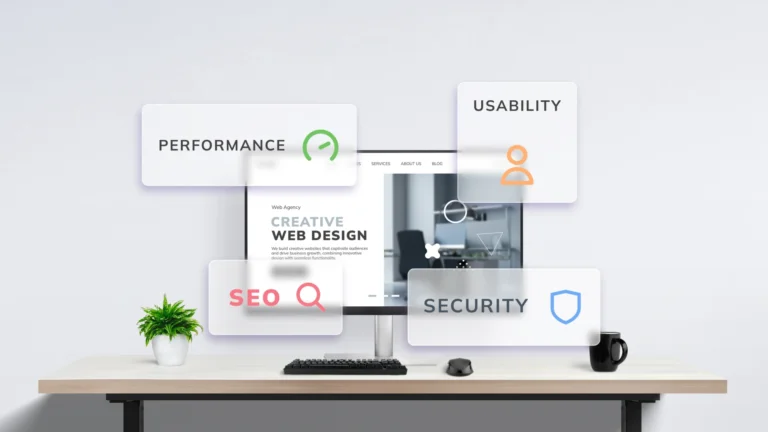Struggling with difficult clients and seeking straightforward solutions? In this article, you’ll uncover key strategies on how to deal with difficult clients, addressing the heart of client conflicts, equipping you with the skills to handle challenging situations confidently. Expect to delve into practical techniques that maintain your composure and enhance dialogue—without the extra fluff. Prepare to navigate client challenges more adeptly, all while retaining your professionalism and sanity.
In short
- Maintain a calm demeanor, practice active listening, and set clear expectations early on to effectively manage difficult client relationships.
- Identify the specific types of difficult clients, such as the perpetually unhappy client or the micro-manager, and tailor your approach to cater to their unique needs and challenges.
- Implement preventative measures such as a robust onboarding process, regular check-ins, and transparent communication to minimize the occurrence of challenging client scenarios.
@connectivewebdesign Ever dealt with a nightmare client? 😱 Don’t fear. Here are our top tips to prepare you to navigate client challenges more adeptly, all while retaining your professionalism and sanity. 💼 #ClientManagement #ClientRelations101 #MarketingStrategies #ClientSuccess #BusinessTips #Entrepreneurship #ClientRetention #ClientSatisfaction #Marketing101 #MarketingStrategy ♬ original sound – Rodney Warner
Navigating the choppy waters of client interactions
Picture this scenario: you’re on a call with a client who’s displeased with your services. Their voice is rising, and you can feel your heart rate quicken in response. What do you do? Well, the first step is to remain calm. Easier said than done, right? Keep in mind, your composed nature can prompt the client to mirror your calmness, aiding in defusing the situation and promoting sound judgment. It’s like a mirror; if you remain composed, your client is more likely to match your calmness.
Remaining composed is merely one aspect of the equation. Another vital component is active listening. This is the key to truly understanding your customer’s needs and concerns. Actively listening allows you to accurately spot and tackle client issues, fostering improved relationships and fruitful interactions. This skill is especially useful when a client raises an issue or concern. It’s about creating a space for the client to share their experience and feel heard.
The third piece in navigating these choppy waters is setting clear expectations early on. This means having a clear and detailed discussion about services, timelines, and responsibilities at the very beginning of your business relationship. Defining clear expectations can help avoid escalations, promote mutual understanding, and build the groundwork for a successful business relationship. Now, let’s dive deeper into each of these pieces.
The art of remaining calm
When dealing with challenging clients, maintaining a calm and patient demeanor can be a game-changer. This can help you defuse the situation effectively, avert additional escalation, and foster more constructive problem resolution. This approach helps in building a strong business relationship with the client.
But how do you stay calm when a client is venting their frustrations? The answer lies in mindfulness. Concentrating on the present and utilizing apt stress management tools, mindfulness aids you in controlling your emotions and keeping your cool. It’s like having a secret weapon that can turn the tide in difficult client interactions.
Techniques for active listening
We’ve all heard the saying, “Listen to understand, not to reply.” This is the essence of active listening. To practice active listening, start by asking supplemental questions and echoing their statements back to them, which equips you to become proficient at this skill. Active listening allows you to identify the specifics of a problem, shifting the focus towards finding a solution.
Don’t forget that asking open-ended questions can help clarify the issue at hand. This collaborative approach can facilitate both you and the client in identifying the root of the problem. It’s all about making a real difference and finding the way forward.
Setting clear expectations early on
Setting clear expectations early on is like setting the stage for a successful play. It’s all about ensuring that everyone involved knows their roles and what the final act should look like. Client onboarding workflows are the key to establishing project terms and managing client expectations effectively.
In case of conflicts, use the contract and past communications to find a resolution and approach conversations with possible solutions. Having clients sign contracts prior to payment facilitates lucid communication and circumvents miscommunication. It’s about getting off on the right foot and continuing in that direction.
Recognizing the signs: Types of difficult clients
Now that we’ve set the stage with calmness, active listening, and clear expectations, let’s take a closer look at the actors in our play: the clients. Recognizing various types of challenging clients is essential because it allows for the implementation of bespoke approaches and strategies that cater to their distinct needs and hurdles, resulting in more productive interactions and triumphant outcomes.
In our experience, we’ve come across a variety of difficult clients, including perpetually unhappy clients, micro-managers, last-minute demanders, and more. Each type presents its own unique set of challenges and requires a specialized approach. For instance, a customer with unrealistic expectations may demand more than what your products or services can reasonably provide. Recognizing this early on and learning to manage client expectations can help you tailor your approach to address the specific needs of difficult customers.
So, how do you tailor your approach? Let’s dive into each type of difficult client to understand better and learn how to handle them effectively.
The perpetually unhappy client
The perpetually unhappy client is the one who, no matter what you do, always seems to find something to complain about. Dealing with such clients requires empathy and understanding, ensuring the client feels heard and acknowledged. Identifying their shared characteristics enables you to preemptively tackle their concerns, enhance your work to satisfy their expectations, and assist them in adopting a more optimistic perspective.
It’s all about understanding their dissatisfaction and turning it into satisfaction.
The Micro-manager
Have you ever had a client who wants to be involved in every little detail of the project? That’s a micro-manager. They often require more frequent updates and reassurances to feel confident in the work being done. But don’t fret! Effectively managing a micro-managing client entails:
- Providing precise and comprehensive updates on progress and milestones
- Maintaining transparency about the process
- Keeping them updated through regular communication
- Establishing clear expectations and boundaries
- Proactively listening to their concerns
- Offering solutions and alternatives to their requests
- Maintaining a professional and calm demeanor in all interactions
The last-minute demander
Last on our list is the last-minute demander. These clients often make requests at the eleventh hour, putting you under unnecessary pressure. Addressing such clients necessitates explicit communication about project timelines and limitations.
By taking immediate action, such as rescheduling other appointments or delegating tasks, and learning from these incidents, you can prevent such occurrences in the future.
Crafting thoughtful responses to tough situations
Navigating difficult client interactions is akin to sailing in stormy seas. But with the right tactics, you can turn these challenging situations into opportunities for growth. One strategy is devising considerate responses to challenging situations, which includes acknowledging client worries, supplying precise information, and presenting solutions when suitable.
In this section, we’ll explore how to respond to an angry email, deal with incomplete information, and when to accept blame and offer solutions. These are all common scenarios that you’re likely to encounter when dealing with difficult clients. But fear not! With the right approach, you can turn these challenging situations into opportunities for growth and learning.
So, let’s dive into each of these scenarios and explore how to handle them effectively.
Responding to an angry email
Receiving an angry email from a client can be quite unsettling. But remember, the way you respond can either escalate or diffuse the situation. So, how should you handle it? Here are some steps to follow:
- Begin by maintaining composure.
- Recognize the customer’s worries.
- Provide reassurance.
- Supply further information.
- Sincerely apologize if required.
By following these steps, you can effectively handle an angry email from a client.
It’s all about empathizing with their frustration and focusing on resolving the issue.
Dealing with incomplete information
Another common scenario is dealing with incomplete information. This can be quite challenging as it can lead to misunderstandings and miscommunications. The optimal strategy in such situations is to request detailed information and clarify particulars. By doing so, you can better understand the client’s needs and offer a solution that aligns with their expectations. Remember, clear communication is key to avoiding misunderstandings.


When to accept blame and offer solutions
Accepting blame can be difficult, especially when you believe you’re not at fault. However, there are situations where taking responsibility can help rebuild trust and maintain a positive client relationship. Accepting blame exhibits your accountability and illustrates your regard for the client’s emotions and contentment. It’s all about owning any mistakes and offering solutions to rectify the situation.
Preventative measures: Avoiding difficult client scenarios
While mastering the art of handling difficult clients is crucial, wouldn’t it be great if we could avoid such scenarios altogether? That’s where preventative measures come into play. Preventing challenging client scenarios from occurring can be achieved by setting up a robust onboarding process, carrying out regular check-ins, and upholding open communication channels.
In this section, we’ll delve into each of these preventative measures. We’ll explore:
- How a thorough onboarding process can set clear expectations
- How regular check-ins can keep clients engaged
- How transparent communication channels can foster open dialogue
By adopting these practices, you can create a smoother customer experience in the often choppy waters of client interactions, ultimately attracting new clients.
So, let’s dive in and explore these preventative measures in more detail.
Establishing a strong onboarding process
An exhaustive onboarding process acts as a roadmap, navigating clients through your services. It helps set clear expectations, prevent misunderstandings, and establish a positive client relationship right from the start.
Having clients sign contracts prior to payment facilitates lucid communication and circumvents miscommunication. It’s all about getting off on the right foot and continuing in that direction.
Regular check-ins and updates
Consider regular check-ins as the compass guiding your client interactions on the right path. They:
- Keep managers informed on project progress
- Reinforce objectives
- Foster client engagement
- Ensure team members have necessary resources
By providing clear and detailed updates on progress and milestones, being transparent about the process, and communicating regularly, you can keep your clients informed and engaged.
Transparent communication channels
Clear communication channels resemble clear skies, facilitating a smooth journey. They prevent misunderstandings and foster open dialogue, leading to more effective client interactions.
By offering alternative ways to communicate, you can make the client feel included and empowered. Remember, clear skies make for a smoother sailing experience.
Conflict resolution: Turning challenges into opportunities
Every seasoned sailor knows that storms are inevitable. But it’s how you navigate through them that truly matters. The same applies to dealing with difficult clients. Conflicts are bound to arise, but with the right approach, you can turn these challenges into opportunities. This involves:
- Identifying the root cause of dissatisfaction
- Using collaborative problem-solving approaches
- Following up after resolution to ensure client satisfaction.
In this section, we’ll delve deeper into each of these steps. We’ll explore how to identify the root cause of dissatisfaction, how to use collaborative problem-solving approaches, and the importance of following up after resolution. By understanding these steps, you can turn the tide in your favor and navigate through conflicts successfully.
So, let’s dive in and explore how to turn challenges into opportunities.
Identifying the root cause of dissatisfaction
When dealing with an unhappy client, it’s crucial to understand why they are dissatisfied. This requires pinpointing the root cause of their discontent. Identifying this allows you to customize your strategy to tackle their particular issues and transform their dissatisfaction into satisfaction.
Remember, understanding is the first step towards resolution.
Collaborative problem-solving approaches
Once you’ve identified the root cause of dissatisfaction, the next step is to find a solution. This is where collaborative problem-solving comes into play. It’s about working together with the client to find a solution that meets both of your needs.
Maintaining composure and concentrating on their interests and values enables effortless navigation through conflicts.
Following up after resolution
The journey doesn’t end once the conflict is resolved. A follow-up after resolving a situation exhibits your dedication to client satisfaction and aids in sustaining a positive relationship. It’s about showing gratitude, gathering feedback, and offering further support.
Remember, the journey is just as important as the destination.
Time management tactics for dealing with demanding clients
Time management is a crucial skill when dealing with demanding clients. It involves prioritizing client issues, streamlining communication, and setting boundaries for work-life balance. These tactics can help you manage your time effectively and prevent burnout.


In this section, we’ll delve deeper into each of these tactics. We’ll explore how to prioritize client issues, how to streamline communication, and the importance of setting boundaries for work-life balance. By mastering these tactics, you can manage demanding clients effectively without compromising your wellbeing.
So, let’s dive in and explore these time management tactics.
Prioritizing client issues
When dealing with multiple client issues, it’s important to prioritize. This ensures that the most pressing concerns are addressed first. By assessing the urgency and impact of the problem on the client’s business, you can prioritize effectively. Remember, not all issues are created equal.
- Assess the urgency and impact of each client issue on their business.
- Prioritize the issues based on their urgency and impact.
- Address the most pressing concerns first.
- Remember that not all issues are created equal.
Streamlining communication
Streamlining communication is key to managing demanding clients. It improves efficiency and prevents misunderstandings. By using a CRM system, a project management system, and having scheduled meetings from the start, you can streamline communication effectively.
Remember, clear communication and understanding body language are key to success.
Setting boundaries for work-life balance
In the hustle and bustle of managing demanding clients, it’s easy to forget about work-life balance. But it’s crucial to set boundaries to maintain personal wellbeing and prevent burnout.
By setting clear boundaries between work and personal life, taking time off from work, and engaging in regular exercise, you can effectively reduce stress and prevent burnout. Remember, your wellbeing is just as important as your work.
Personal development: Skills to excel in client management
Beyond the tactics and strategies, excelling in client management also involves personal development. This includes improving negotiation skills, cultivating patience and empathy, and learning from each interaction. These skills can help you build stronger relationships with clients and excel in your role.
In this section, we’ll delve deeper into each of these skills. We’ll explore how improving negotiation skills can lead to more favorable outcomes, how cultivating patience and empathy can build rapport with clients, and how learning from each interaction can lead to continuous improvement. By developing these skills, you can become a master in client management.
So, let’s dive in and explore how personal development can help you excel in client management.
Improving negotiation skills
Negotiation is a crucial skill in client management. It involves:
- Developing strong communication skills
- Engaging in respectful discussions
- Striving for mutually beneficial solutions
- Building lasting positive relationships
By mastering negotiation skills, you can navigate through conflicts with ease and turn challenging situations into opportunities.
Cultivating patience and empathy
Patience and empathy are key to building rapport with clients. Here are some strategies to help you become a more patient and effective communicator:
- See through the lens of others
- Evaluate tension points in an unbiased way
- Listen and ask questions with a positive attitude
- Do not run away from personal responsibility
By implementing these strategies, you can develop stronger client relationships.
Remember, understanding and patience are the keys to a successful relationship.
Learning from each interaction
Every client interaction is an opportunity for learning. Reflecting on outcomes and feedback from client interactions enables you to modify your approach and become more skilled at handling diverse client personalities and requirements. Remember, every interaction is a step towards becoming a better professional.
Summary
Navigating the stormy seas of difficult client interactions can be a daunting task. But armed with the right strategies and tactics, you can steer the ship to calmer waters. We’ve explored how to stay calm under pressure, listen actively, and set clear expectations. We’ve identified different types of difficult clients and learned how to tailor our approach to their specific needs. We’ve discussed how to craft thoughtful responses to tough situations, prevent difficult client scenarios, resolve conflicts, and manage our time effectively. And finally, we’ve explored how personal development skills, such as improving negotiation skills, cultivating patience and empathy, and learning from each interaction, can help us excel in client management.
Remember, every challenging situation is an opportunity for growth and learning. So, the next time you find yourself in stormy seas with a difficult client, remember these strategies and tactics. Use them to steer the ship, navigate through the storm, and emerge stronger on the other side. After all, as the old saying goes, “Smooth seas do not make skillful sailors.”
Frequently asked questions
How do we handle a difficult client?
When dealing with a difficult client, it’s important to stay calm and empathize with their concerns. Listen to them, offer a solution, and review the situation to learn from it.
How do you deal with demanding customers?
When dealing with demanding customers, remember to listen first and foremost, build rapport through empathy, and respond calmly and professionally. Practicing active listening, empathy, and keeping a professional and calm demeanor will help you handle difficult customers effectively.
How can I prevent difficult client scenarios?
To prevent difficult client scenarios, establish a strong onboarding process, conduct regular check-ins, and maintain transparent communication channels. This helps set clear expectations and prevents misunderstandings.
What is the importance of conflict resolution in client management?
Conflict resolution in client management is crucial as it helps in identifying and addressing client dissatisfaction effectively through collaborative problem-solving, leading to enhanced client satisfaction.
How can time management tactics help in dealing with demanding clients?
By prioritizing client issues, streamlining communication, and setting work-life balance boundaries, time management tactics can help you effectively manage demanding clients and prevent burnout.















